Getting a steady supply of user feedback is essential if you want to grow your product. User feedback confirms whether your product is providing value to your target audience, and helps you identify problems that are losing you customers.
However, getting user feedback manually (by email, or social media, for example) is difficult and time consuming. This is why website tools specially designed for collecting user feedback can save you time and help you spot issues faster.
In this article, we’ll look at 6 different tools for collecting website feedback. We’ll give you an overview of each and discuss which are best for specific use cases.
- Saber Feedback – visual feedback tool
- Feature Upvote – ideas board with upvoting
- Qualaroo – website survey tool
- GetSatisfaction – community forum builder
- Typeform – ‘traditional’ survey tool
- TrustPilot – webshop review tool
1. Saber Feedback – visual feedback tool
Saber Feedback is a tool for gathering website feedback through a feedback button. You can ask users for different types of feedback using text fields, dropdown menus, star ratings, emojis and so on. You can also use form logic to follow up on your initial question. Unusually for this type of simple feedback tool, Saber Feedback supports visual feedback in the form of screenshots. It has a number of native integrations so you can send feedback direct to Slack, Jira, Trello and so on.
Pricing: From $49/month
Free trial: Yes, 30 days
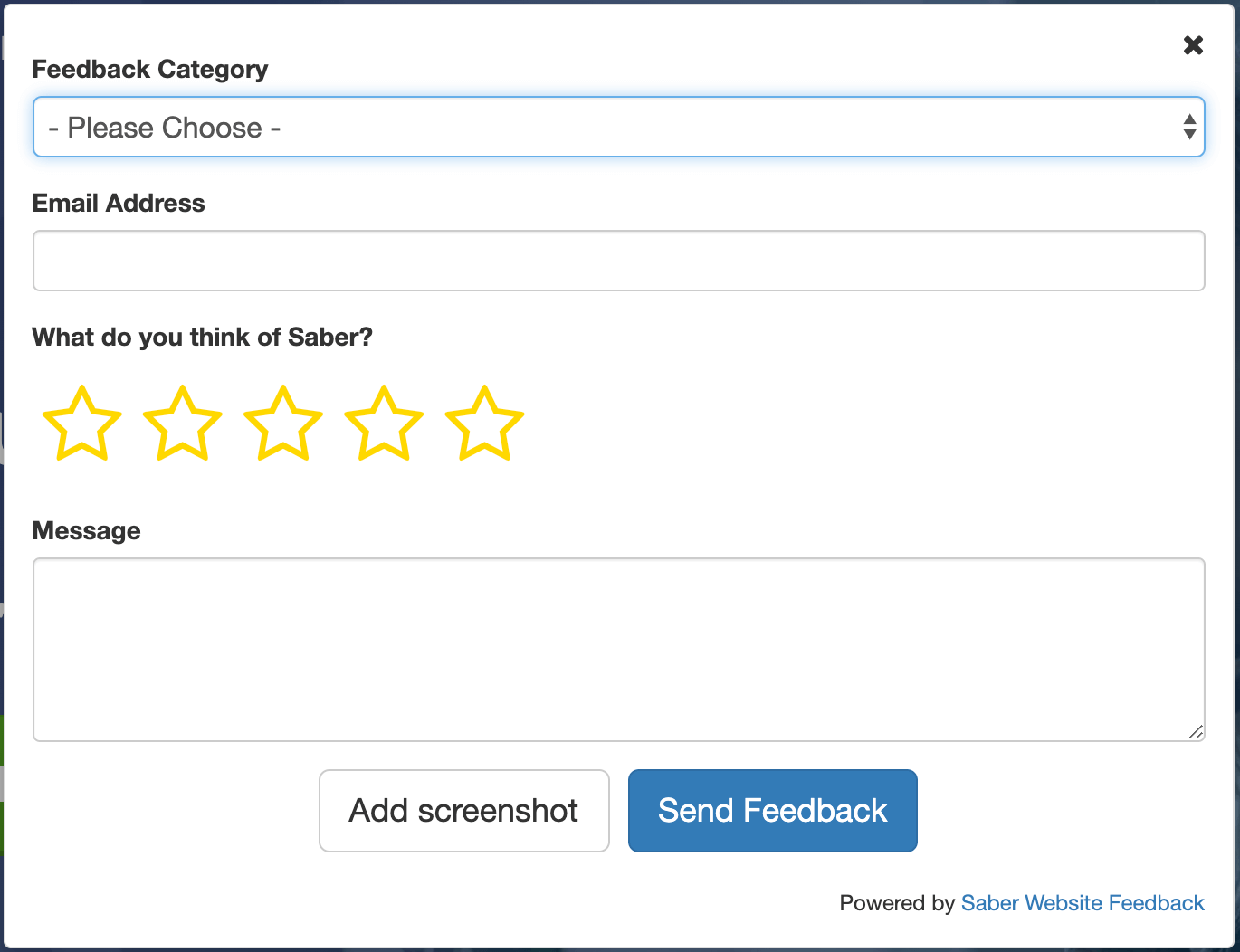 Ask your users for the feedback you need using different form types
Ask your users for the feedback you need using different form types
Will Saber Feedback be a good fit for your company?
Saber Feedback is a good ‘all round’ feedback tool. It has an accessible price point and enough features to be useful without overloading you with options. It is designed to be easy for you and your customers to use – so should fit in with your existing workflow rather than lead to extra work. Saber Feedback supports a feedback button, which is a discreet way of inviting feedback, without getting in the way of your users doing something useful.
Why might Saber Feedback not suit you?
Saber Feedback doesn’t support ‘trigger actions’ like users leaving the page. It’s basically quite a simple product. It also doesn’t offer analytics as part of the dashboard offering, although there is a decent search function. So if you need additional functionality, and analytical clout, you’ll need a more upstream competitor. Saber Feedback also only works on websites.
Alternatives to Saber Feedback
We list other visual feedback tools in this article. Examples include Marker.io and Usabilla.
2. Feature Upvote – ideas board with upvoting
With Feature Upvote you can centralise your user feedback in one online board. Users can add feedback direct to public boards, and upvote suggestions they support. The most popular suggestions will rise to the top of your board, making them easy to spot. You can also close the feedback loop by adding status updates and comments to suggestions. Feedback boards can be made public or kept private (through SSO or a password). Available integrations include Jira, Slack and Zapier.
Pricing: From $39 a month
Free trial: Yes, 30 days
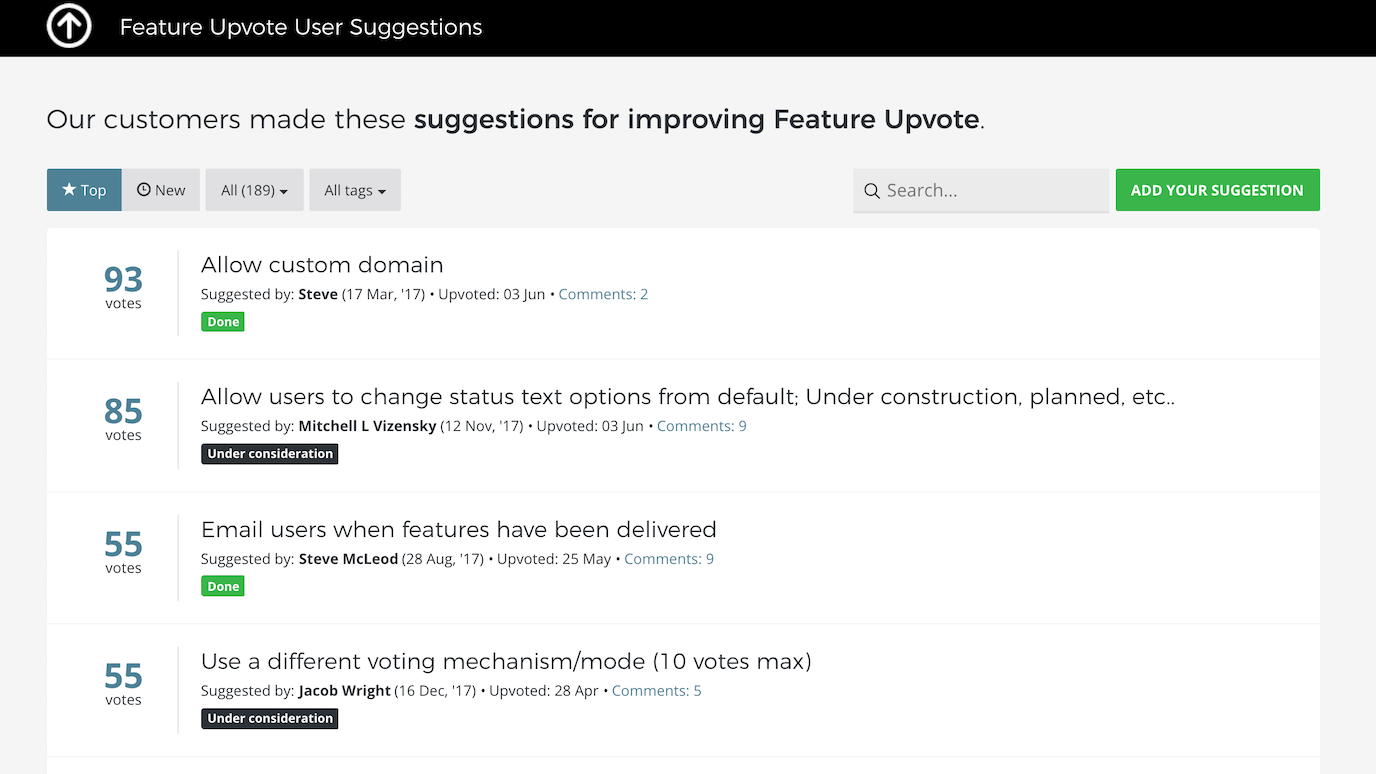 Centralise and prioritise user suggestions in one online board
Centralise and prioritise user suggestions in one online board
Will Feature Upvote be a good fit for your company?
Feature Upvote is particularly useful if you want to collect and prioritise feedback. Having users prioritise suggestions themselves through upvoting can lead to valuable insights. Feature Upvote can also help create a culture of transparency and collaboration around your product, as feedback is openly viewable by either your team or your entire customer base.
Why might Feature Upvote not suit you?
Feature Upvote is most suitable when you want to collect suggestions and feature requests in one place. It isn’t good for other use cases. For example, if you want to collect bug reports, you would be better with a visual feedback tool. It’s also not suitable if you want users to be able to report feedback without leaving the page they are on.
Alternatives to Feature Upvote
An established competitor to Feature Upvote is UserVoice. Here’s a comparison of Feature Upvote and UserVoice. Another alternative is Aha!.
3. Qualaroo – website survey tool
Qualaroo Nudges lets you create simple, short surveys that usually appear at the bottom of your screen. You can target specific customers based on where they are and how they’ve behaved. For example, you can ask for pricing feedback when someone is looking at the pricing page. Quaraloo provides templates you can use, or you can create your own.
Pricing: From $40 a month, less if billed annually
Free trial: Yes, 14 days
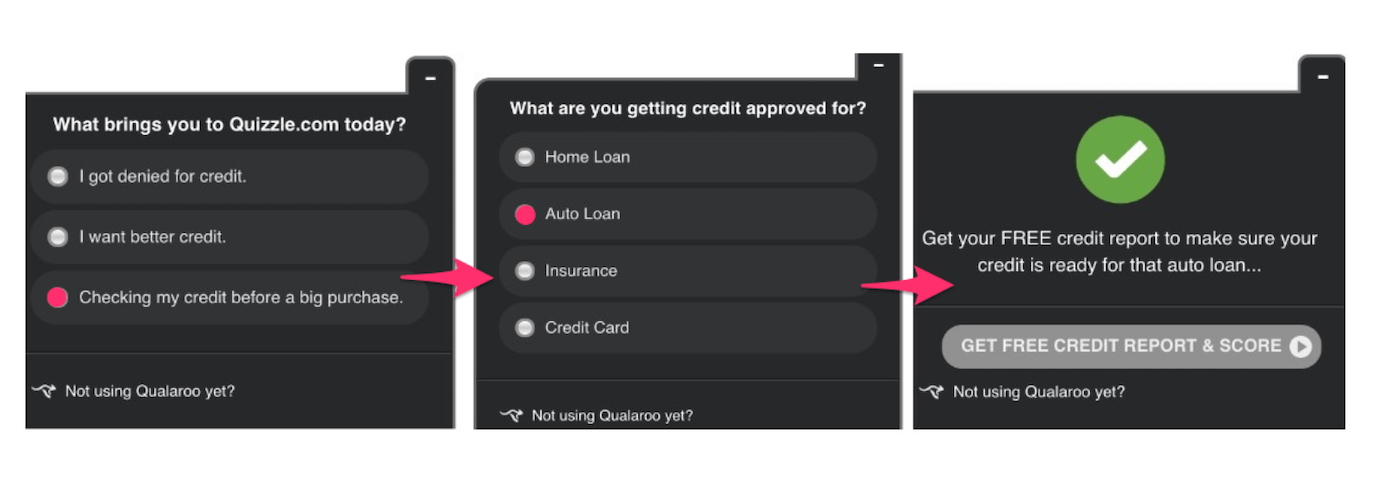 Qualaroo supports form logic so you can ask relevant follow-up questions
Qualaroo supports form logic so you can ask relevant follow-up questions
Will Qualaroo be a good fit for your company?
Qualaroo is a well developed user research tool that means you can be very targeted in the feedback you collect via your website surveys. Asking certain users for feedback at the right time, will lead to more (and probably better quality) feedback. Qualaroo can also be used almost anywhere: on your website, inside your mobile app and even in certain prototyping tools.
Why might Qualaroo not suit you?
Qualaroo has a fairly high price point, so will likely be of more value to larger companies. Also, the effectiveness of this type of tool depends almost entirely on the research and effort exerted by your team. Short pop up surveys can be intensely annoying if they are not relevant to your users, or get in the way of them completing useful tasks.
It’s easy with this kind of feedback tool to think: “What feedback does my company need?” However, this approach will lead to disappointing results. You have to work out what feedback strategy is most helpful to your customers – and that can be much harder!
Alternatives to Qualaroo
Alternatives include other ‘voice of customer’ website survey tools like Survicate and Pulse Insights.
4. GetSatisfaction – community forum builder
GetSatisfaction creates a ‘social’ experience for your users, with feedback collected in a public community space. You can embed community content and signposts throughout your website, so feedback ends up in the forum rather than the inbox of your support team. Once there, other users can comment on it and react to it. By publicly surfacing feedback, you should be able to see what gets most traction with your users. GetSatisfaction offers a number of options for moderating and managing your community forum.
Pricing: On request
Free trial: No
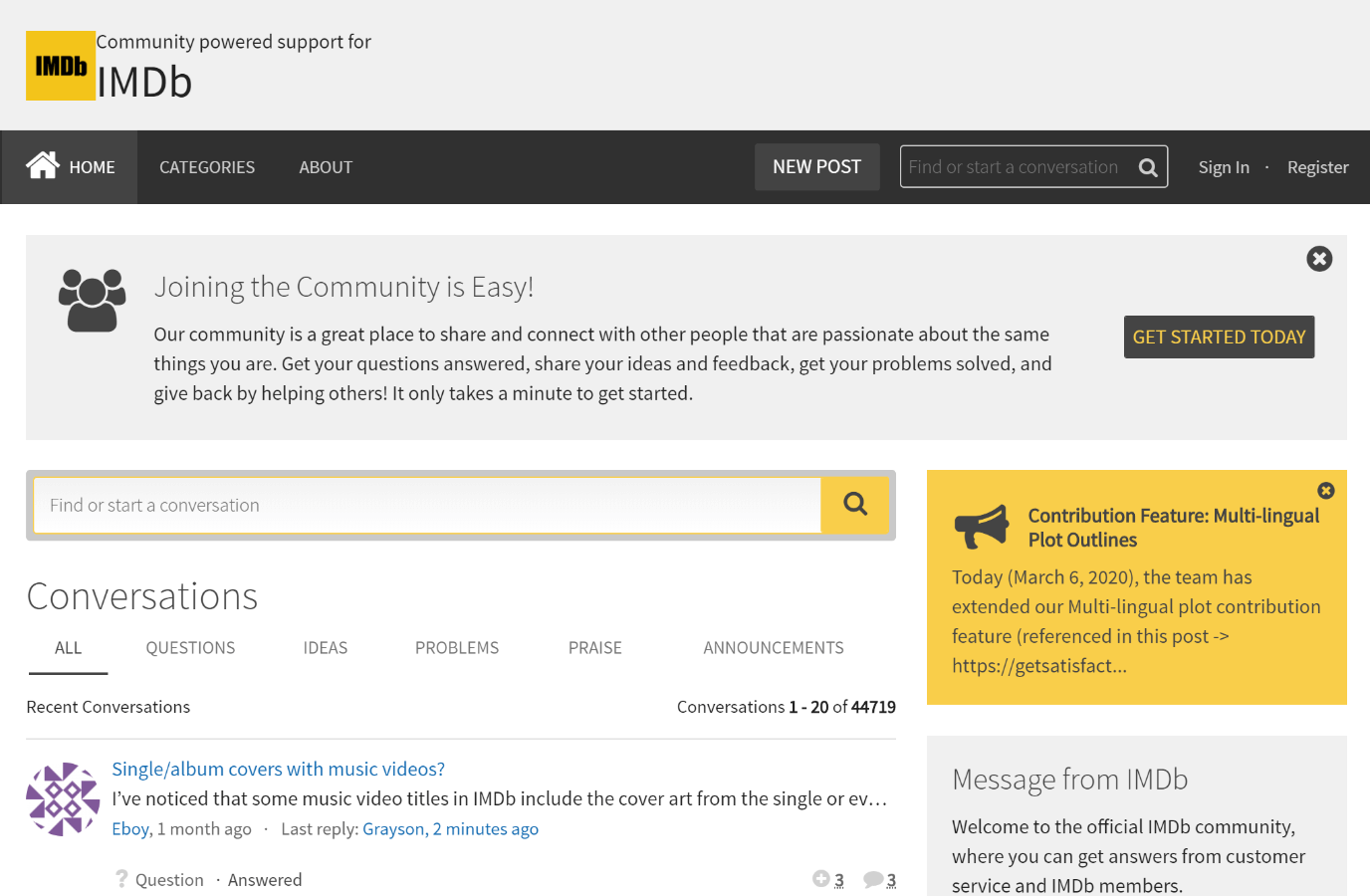 Create a sense of community around your product
Create a sense of community around your product
Will GetSatisfaction be a good fit for your company?
If your company is happy with the idea of feedback being public, and wants to promote user-generated content, then GetSatisfaction could be a good choice. In an ideal scenario, your dedicated fans will help answer questions and queries, reducing the workload on your customer support team and encouraging users to self-service. Making your feedback public can also show confidence in your product and show users that you take their feedback seriously.
Why might GetSatisfaction not suit you?
Although GetSatisfaction provides plenty of moderation and management tools, community forums do require a significant time investment by your team to keep them useful. They will frequently be targeted by spammers, some of whom are sophisticated. Even well meaning users might provide inaccurate or misleading content which will have to be tactfully corrected. Community forums can also be hard for you (and your users) to browse given the way information is organised.
Alternatives to GetSatisfaction
IdeaScale uses crowdsourcing to discover or validate ideas, so has a strong social angle. Customer service tools like Helprace and UseResponse also support community forums. Idea boards with upvoting (like Feature Upvote) are also a feasible alternative, if you want to make user feedback public, but want something a bit neater and more secure.
5. Typeform – ‘traditional’ survey tool
Typeform is a beautifully-designed survey tool that can be used to get user feedback direct from your website. Users can click on a button to bring up a form. Or forms can be triggered like a popup when the page loads, for example. Typeform also favour a more ‘conversational’ survey style, which can get good results. Typeform has many native integrations, so you can send user feedback to your favourite tools.
Price: from £28 per month
Free trial: No, but there is a free plan
 Ask for feedback using well-designed forms
Ask for feedback using well-designed forms
Will Typeform be a good fit for your company?
Typeform can be customised to help you get a wide range of website feedback, and works on almost any device. Their forms look good as well, which can help with response rates.
Why might Typeform not suit you?
Although Typeform can be used to get website feedback by embedding it on a web page, this isn’t particularly easy. Here are the instructions for developers. User feedback tools like Saber Feedback are a better choice if you want a fast and easy set up.
Alternatives to Typeform
There are many ‘traditional’ survey tools on the market, including SurveyMonkey and SurveyPlanet.
6. TrustPilot – webshop review tool
TrustPilot provides review software so you can collect user feedback of your webshop. You can upload a csv of recent orders to TrustPilot to send email invitations, and automatically trigger the review invitation email (and reminder) to all future customers. You can embed reviews on your website using a widget, while verified TrustPilot reviews count toward your Google Seller Rating and Bing Merchant Reviews.
Pricing: from $165 per month, although there is also a free plan
Free trial: No
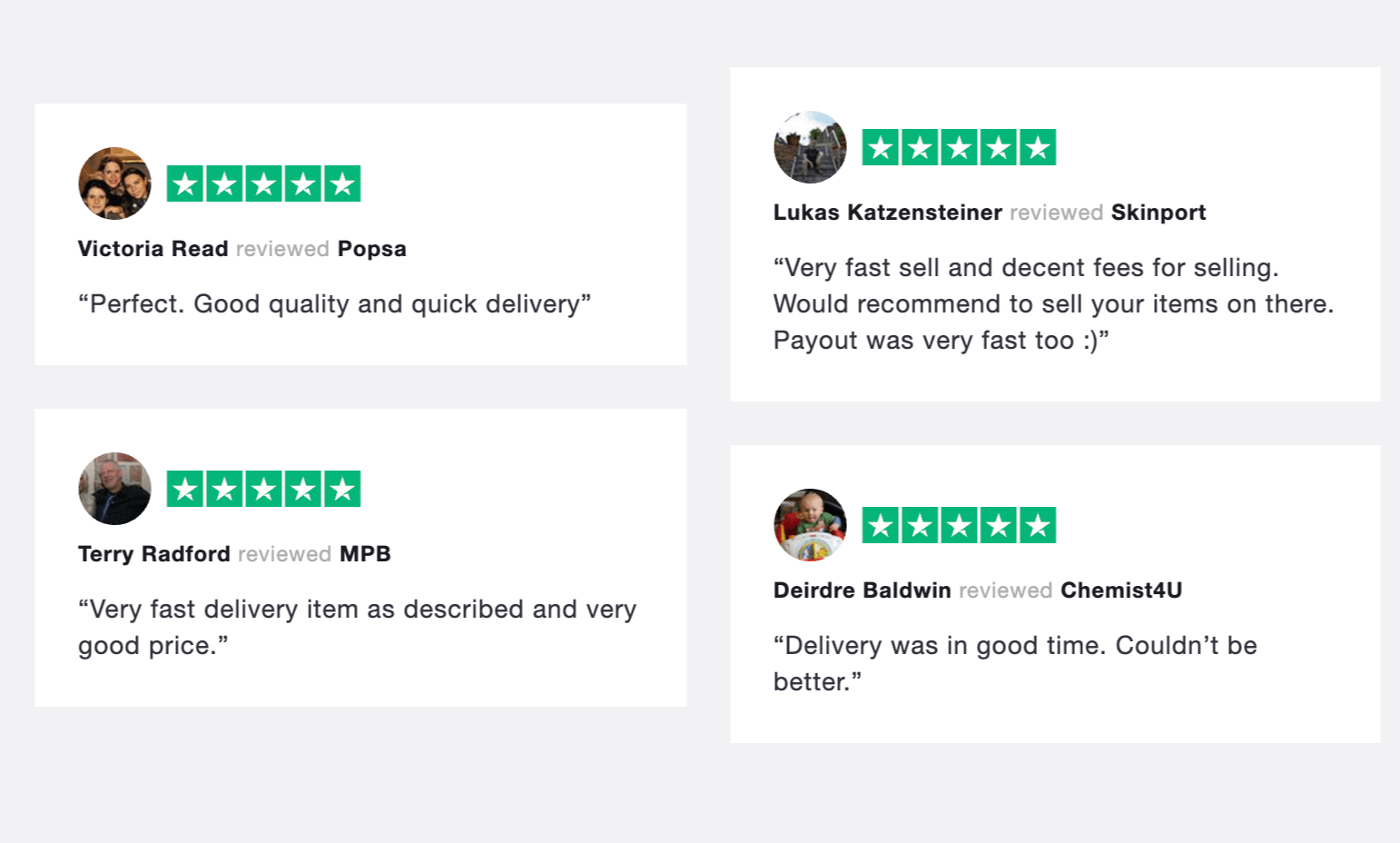 Invite user feedback on your webshop
Invite user feedback on your webshop
Will TrustPilot be a good fit for your company?
Yes, if you want to build confidence around your webshop and are most likely to get good reviews! Good reviews can lead to more sales, because users feel more confident buying from you. Even if you don’t get good reviews across the board, TrustPilot will help you identify problems and points of friction.
Why might TrustPilot not suit you?
TrustPilot is most useful when you have a web shop and want to use positive reviews to increase sales. If you want to surface other feedback – about bugs, outdated content, and usability issues – then TrustPilot is not suitable. It also isn’t the best choice if you want to keep feedback private.
Alternatives to TrustPilot
TrustPilot is a well established brand, but a number of other companies provide similar software, including eKomi and feefo.